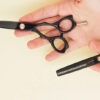Introduction
Proper surgical instrument maintenance is essential for ensuring safety, performance, and compliance in hospitals and clinics. Clean and well-maintained tools reduce infection risk, prolong the lifespan of surgical instruments, and improve surgical efficiency. At Surgment, our FDA, CE, and ISO-compliant instruments are designed for both durability and easy maintenance, supporting surgical departments including orthopedics, general surgery, and dentistry. This 2025 guide covers best practices, cost-saving strategies, and industry trends to help healthcare facilities optimize surgical instrument maintenance.
Why Surgical Instrument Maintenance Matters
Effective maintenance ensures patient safety and operational efficiency. A 2024 Healthcare Infection Control study found that proper instrument care reduces surgical site infections by 20% and extends tool life by 30%. Neglected instruments, with corrosion or dull blades, can cause complications, regulatory violations, or costly replacements. For example, a corroded forceps may fail during surgery, risking patient harm. Surgment’s instruments are crafted for easy maintenance, ensuring reliability in high-stakes environments.
Key Maintenance Steps
- Pre-Cleaning: Rinse instruments immediately post-use to remove blood, tissue, or saline.
- Cleaning: Use enzymatic cleaners in an ultrasonic bath for 5–10 minutes to dislodge debris.
- Sterilization: Autoclave at 134°C for 3–5 minutes, using sterilization pouches for traceability.
- Sharpening: Sharpen scissors, scalpels, or osteotomes every 6–12 months to maintain efficiency.
- Lubrication: Apply instrument-grade lubricant to hinges or locks post-cleaning to prevent rust.
- Storage: Store in sterile, padded trays with moisture-control packs to avoid corrosion.
Common Maintenance Challenges and Solutions
- Corrosion: Use stainless steel instruments and rinse saline promptly. Surgment’s tools resist rust.
- Dull Blades: Schedule regular sharpening and inspect before use to ensure precision.
- Sterilization Errors: Train staff on autoclave settings and use indicators to verify sterility.
- High Costs: Invest in durable tools to reduce replacements; bulk purchase sterilization supplies.
- Time Constraints: Implement efficient workflows, like dedicated cleaning stations, to streamline processes.
Case Study: Streamlining Maintenance with Surgment’s Tools
In 2024, a hospital in Florida adopted Surgment’s FDA-compliant surgical instruments and implemented our recommended maintenance protocols. Previously, inconsistent cleaning led to 15% of instruments needing premature replacement, costing $50,000 annually. After switching to Surgment’s durable tools and standardized maintenance, the hospital reduced replacements by 25% and infections by 18%, saving $60,000. This case highlights the value of quality tools and proper care.
Cost-Saving Maintenance Tips
- Invest in High-Quality Tools: Surgical-grade instruments like those from Surgment reduce long-term replacement costs.
- Train Staff Consistently: Routine training helps prevent damage and ensures proper cleaning and sterilization practices.
- Use Automated Systems: Ultrasonic cleaners and automated autoclaves improve cleaning consistency and efficiency.
- Track Maintenance Schedules: Logging sterilization and sharpening dates prevents tool neglect.
- Buy in Bulk: Stock up on sterilization pouches, enzymatic cleaners, and lubricants for better pricing and inventory control.
Trends in Surgical Instrument Maintenance for 2025
- Automated Cleaning Systems: Robotic washers for consistent, hands-free cleaning.
- Eco-Friendly Solutions: Biodegradable cleaners and recyclable sterilization pouches.
- Smart Tracking: IoT-enabled systems to monitor instrument usage and maintenance schedules.
- Single-Use Instruments: Disposable tools for high-risk procedures, reducing maintenance needs.
Frequently Asked Questions (FAQs)
- How often should I sterilize surgical instruments?
- After each use, autoclave at 134°C for 3–5 minutes to ensure sterility.
- What causes instrument corrosion?
- Exposure to saline or improper drying; rinse promptly and use moisture-control storage.
- Are disposable instruments cost-effective?
- They reduce maintenance but are pricier long-term; reusable tools like Surgment’s offer better value.
- How do I maintain scissors for optimal performance?
- Clean thoroughly, lubricate hinges, and sharpen every 6–12 months.
Learn more from the CDC’s official guidelines on sterilization and disinfection.
Conclusion
Reliable surgical instrument maintenance plays a vital role in patient safety, infection prevention, and cost control in healthcare settings. By adopting clear cleaning protocols, regular sharpening schedules, and smart storage practices, hospitals and clinics can ensure optimal instrument performance. Surgment’s FDA-compliant instruments are built to withstand the rigors of surgical environments while simplifying maintenance.
Visit our instrument catalog to explore tools designed for long-term performance and streamlined maintenance in 2025.




Add comment